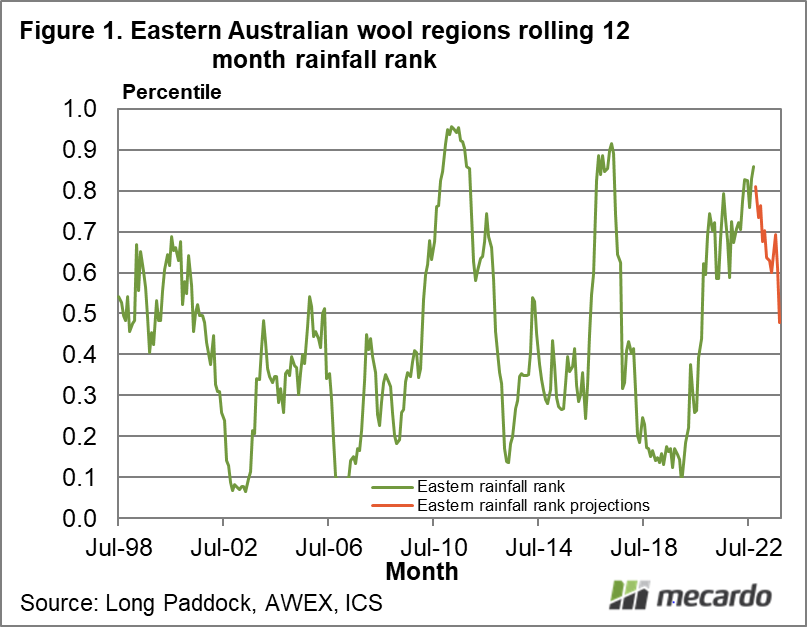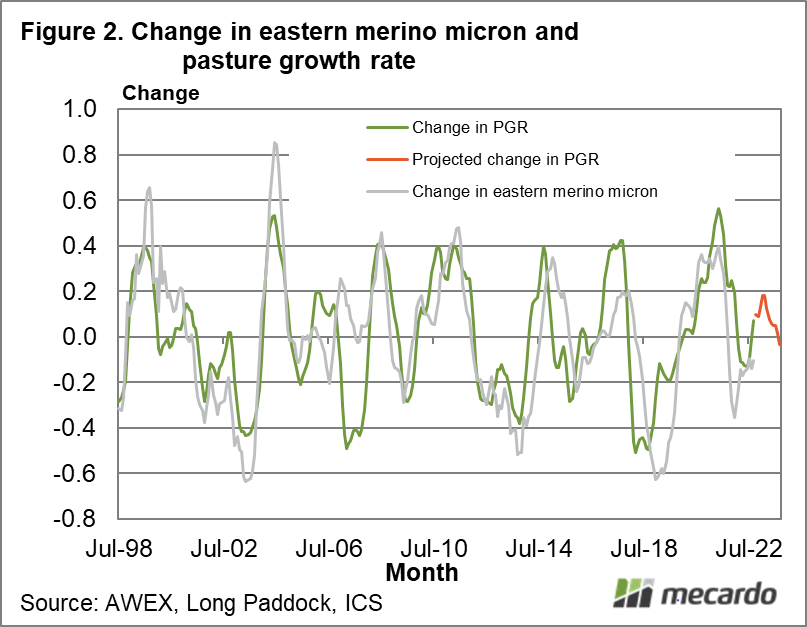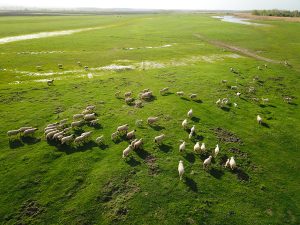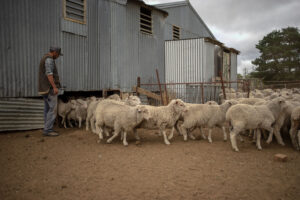With average to good seasonal conditions in most wool regions, questions about fibre diameter in merinos is cropping up. Change in the average merino fibre diameter has implications for the categories on the edge of the distribution (fine and broad), which flows through the relative prices for the different micron categories. This article takes a look at rainfall, pasture and the merino micron in eastern Australia.
A staple of wool reflects the seasonal conditions at the time of growing in terms of fibre diameter, staple length, staple strength, yield and vegetable matter (plus the subjective faults such as colour and water stain). Most of the Australian merino clip is shorn with staples grown over a 12 month period (78% of the merino wool sold in the past year was greater than 70 mm in length), so changes in seasonal conditions during the 12 months prior to shearing will drive changes in the wool specifications, which in this case is fibre diameter.
Figure 1 shows a rainfall series for eastern Australian, weighted across regions for wool production after being converted to rolling 12 month rankings, running from mid-1998 to last month. The series is also limited to the past 40 years in the history it uses to develop the percentile rankings. The rainfall data is drawn from the Long Paddock website run by the Queensland Government. The rainfall rankings have been extended by 12 months using median rainfall levels from the past four decades. For nearly two years the rank has been above 0.6, which is high for the past 24 years. However, in terms of change, the ranking has not changed greatly since late 2021.
The Long Paddock website also provides model developed pasture growth rates (PGR) alongside the rainfall data. In Figure 2 year on year change in the weighted average PGR (same methodology as used in Figure 1) has been used to compare with the change in the merino fibre diameter (adjusted for the downward trend of the 1990s and 2000s). A simple viewing of Figure 1 shows that the changes in the PGR do a good job of explaining the swings seen in the average eastern merino micron. The PGR correlates better with the peaks and troughs of the micron series, which is why it has been used instead of rainfall.
While there had been an expectation for the merino micron to gradually work its way back to being unchanged in late 2021, the speed it did so, the overshoot into negative territory and because it was earlier than expected came as a surprise. Now the PGR series is pointing to the fibre diameter firming slightly, but remaining on slightly changed on year earlier levels. The PGR projections point to minimal shifts in the merino fibre diameter distribution this season.
What does it mean?
Swings in the merino micron distribution can cause significant changes to the supply of broad and fine merinos, even when the total volume changes little. In doing so, the supply side can put significant pressure on the micron premiums and discounts. This is not likely to be a significant factor in the coming year.
On the other side of the market, demand can change mind about micron premiums and discounts, as it seems to be doing. When the two sides of the market combine massive swings in the micron premiums and discounts can occur. In the coming year it seems only changes in the demand side will be operating, which will temper any swings in the micron premiums and discounts.
Have any questions or comments?
Key Points
- Change in the rolling 12 month percentile rank weighted across wool regions for the Long Paddock pasture growth rate is pointing to little change in the average merino micron for the balance of this season.
- This means changes in the supply of fine and broad merino wool will generally reflect changes in the overall flock and wool clip size.
- This also means there will be little pressure from supply to change relative prices between micron categories (keeping in mind the demand side is quite capable of doing this).
Click on figure to expand
Click on figure to expand
Data sources: AWEX, Long Paddock, ICS














